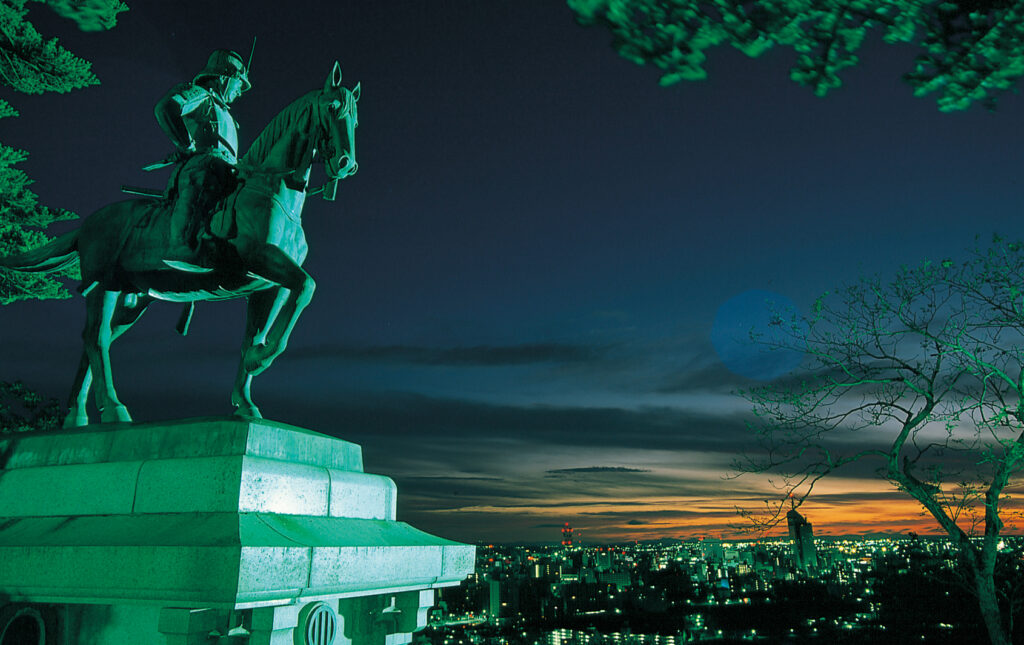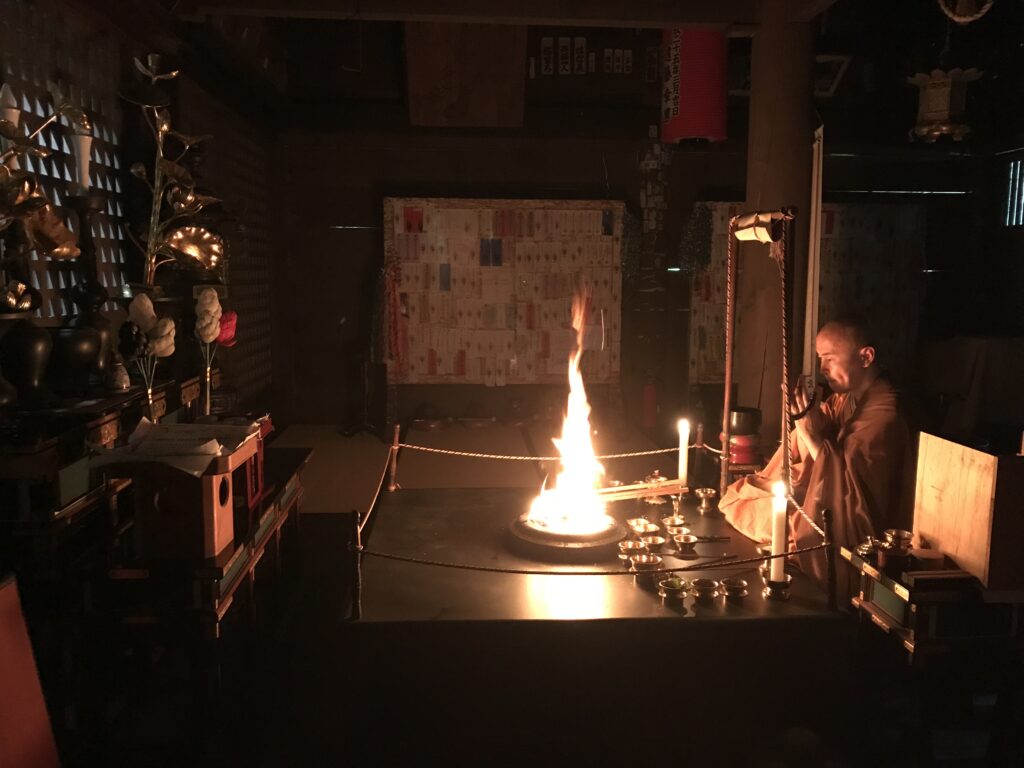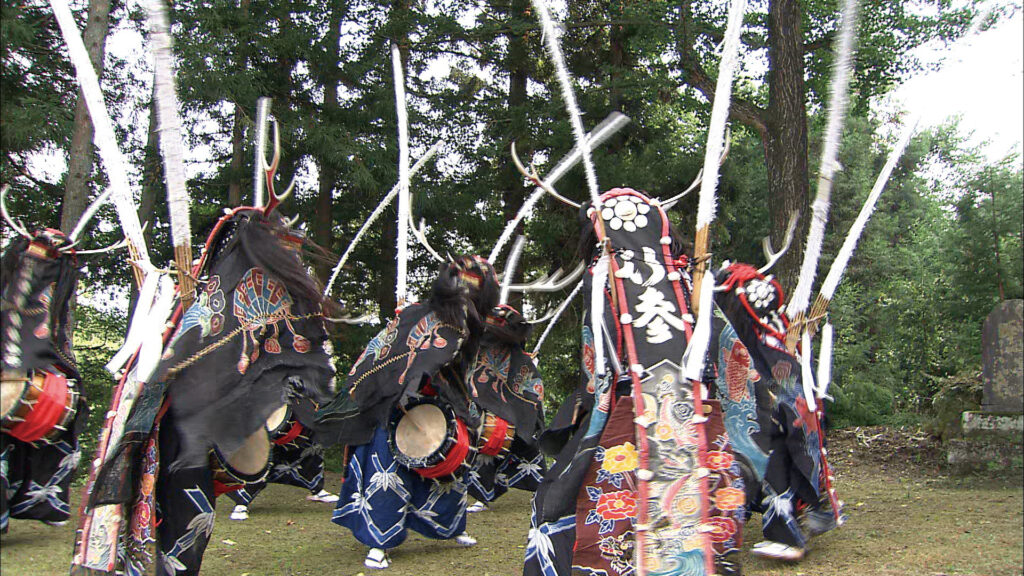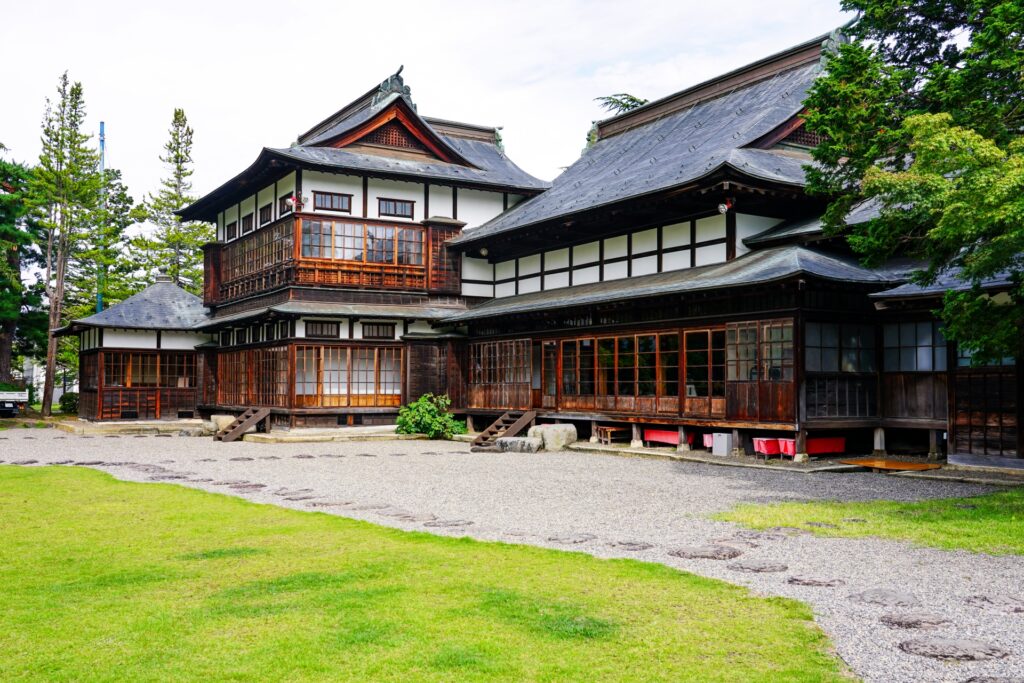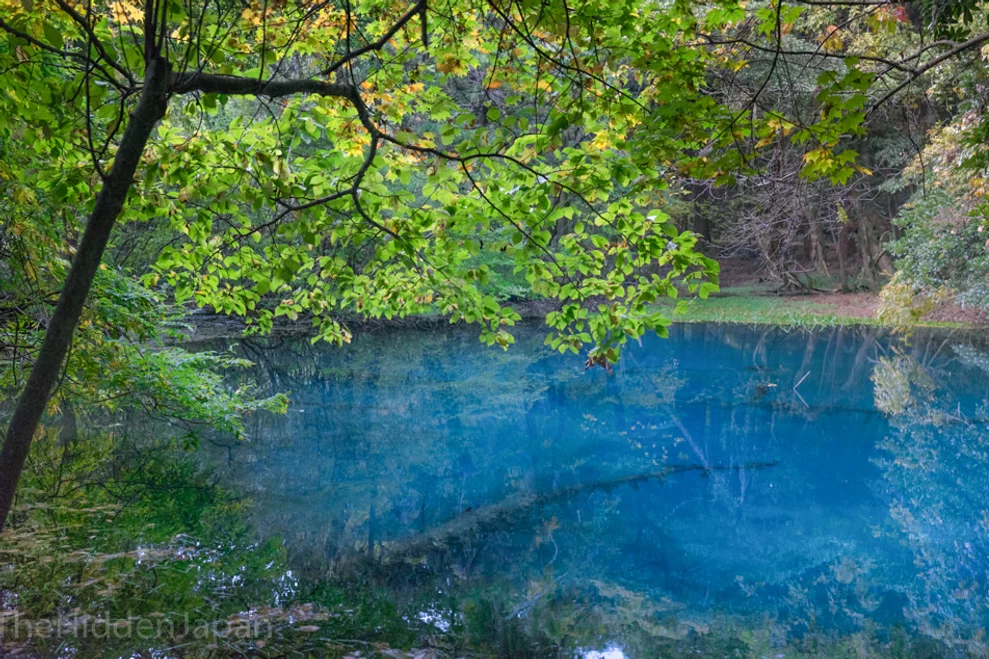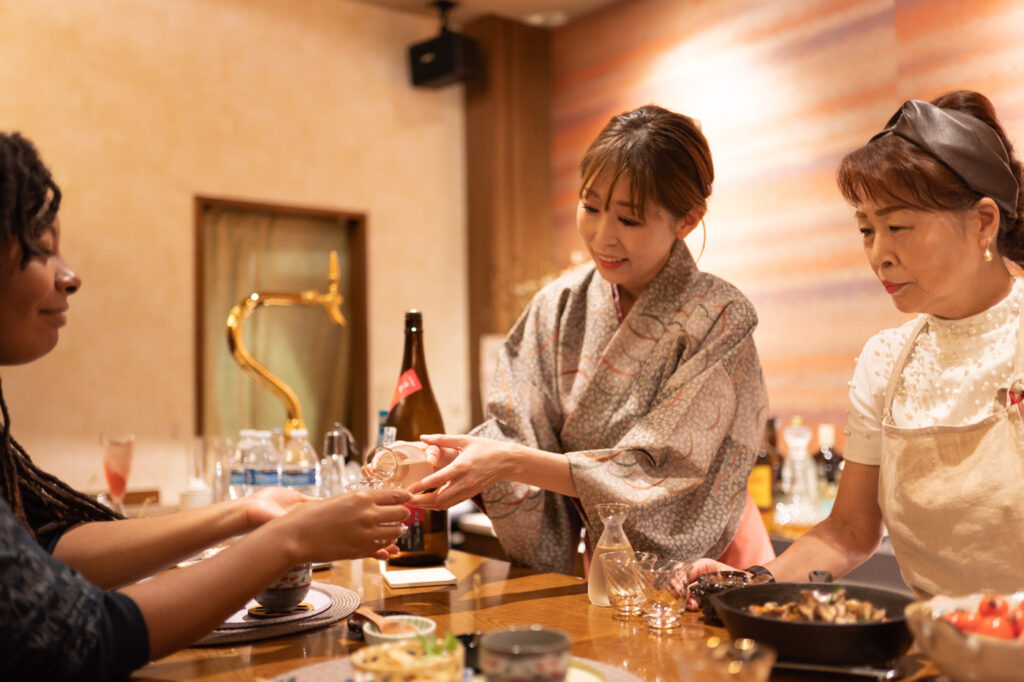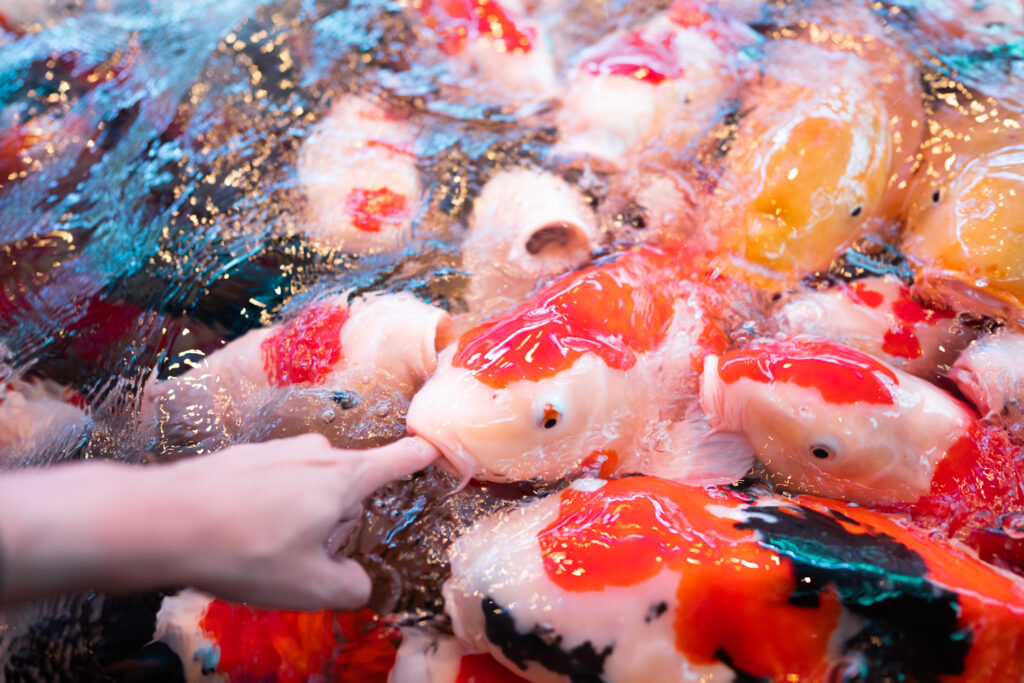
Yamagata Prefecture
Gyokusenji Temple in Tsuruoka City is one of Japan’s best-kept secrets.
Gyokusenji Temple in Tsuruoka City is hidden at the foot of some of the most sacred mountains in all of Japan, Mt. Haguro of The Dewa Sanzan. The Soto sect Buddhist temple was established by one of the instigators of Zen Buddhism in Japan and once even hosted one of Japan’s emperors.
The best part of Gyokusenji Temple has to be its traditional Japanese garden which has been designated as a national cultural heritage site of scenic beauty. The temple is also aptly known as “the flower temple” thanks to the many varieties of flowers on display throughout the year. Looking out over the garden while sipping on a freshly-whisked green tea and nibbling on the accompanying sweet is one of life’s unmissable simple pleasures, and the temple is also the ultimate spot for some Zen meditation.
Quick Info
Cost
Adults: 400 yen
Elementary School Students: 200 yen
Admission with Matcha Green Tea and Wagashi Sweet: 500 yen
Opening Hours
April to October:
Open daily from 9am to 5pm (Last entry 4:30pm).
November to March:
Open Daily from 9am to 4pm (Last entry 3:30pm)
Gyokusenji Temple can be accessed year-round, even though the garden is covered in heavy snow during winter.
Average Duration
1-2 hours
Address
Tamagawa-35 Haguromachi Tamagawa, Tsuruoka, Yamagata Prefecture 997-0121
Other tips
Private transportation or a taxi is required to reach this location without having to walk. See rental car options here.
There is a bus that leaves from Tsuruoka that passes near Gyokusenji Temple, but you have to walk the last 1km from Haguro High School through rice fields.
Entering Gyokusenji Temple
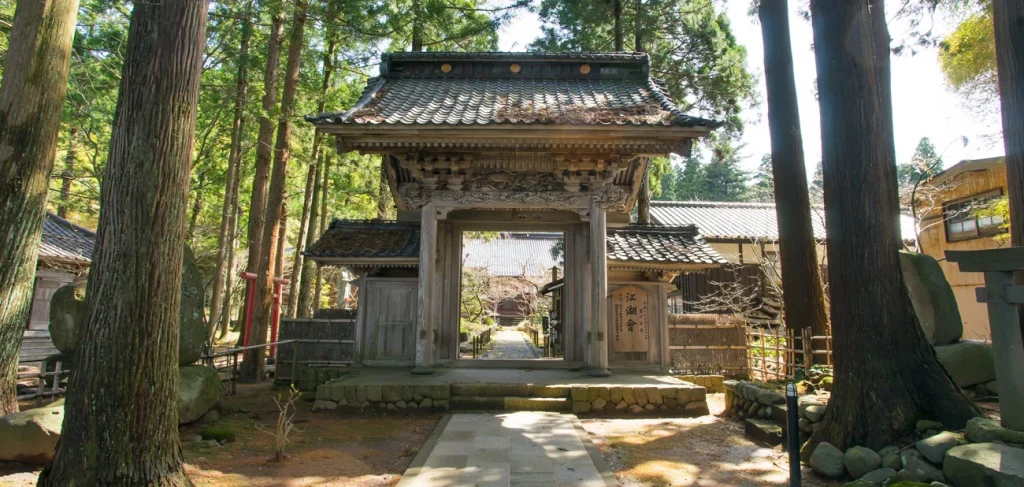
Cross the small bridge and you will be greeted by an elaborate temple gate leading you into an impressive front garden prime for exploring. To your right, you will find the ticket booth (if closed, pay at the main temple) and a hall full of relics from the surrounding Tamagawa area. There is also a shrine to the left of the entrance dedicated to a bountiful harvest, and the front garden is especially radiant in the early summer when the hydrangeas and lotus flowers are in full bloom.
Follow the garden around to the main entrance to the right. Take your shoes off here, and make sure to make yourself welcome by saying “Konnichiwa” (English is fine too) in a loud voice. Here is the perfect time to order your matcha green tea and sweet set (¥500, see below for more).
Walk down the wooden hallway, and you should see the garden out the back, but before checking it out, we recommend inspecting the temple further. Take a left and you will find another long hallway, with the main hall for worshipping off to the right (if you need to, the toilets are located to the left). Here there is a room with ornate statues depicting the founders and previous heads of this temple. Rituals are still held for them in this room to this day.
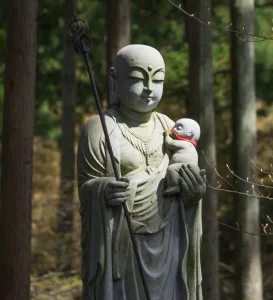
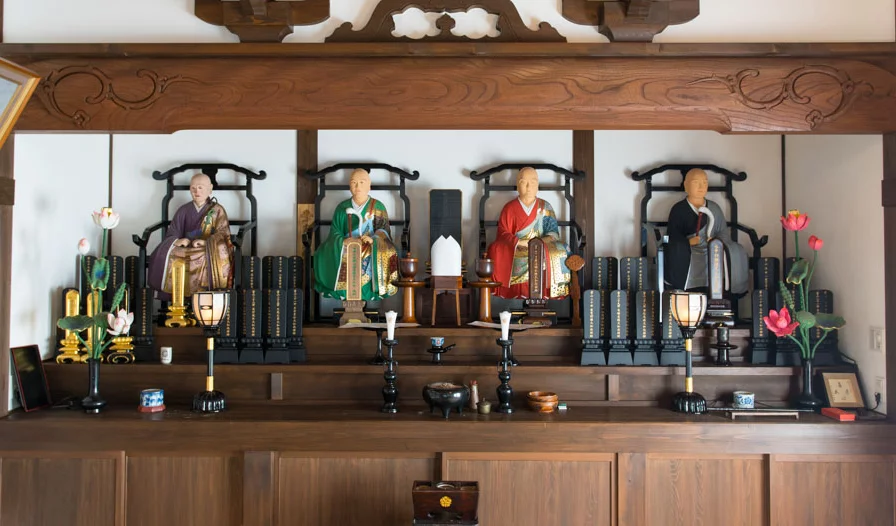
“If you follow the hallway right to the back, you will find what is actually an indoor cemetery. Here lie memorials to hundreds of local families placed here due to the heavy snow making access to cemeteries difficult in the winter.
Pay your respects here, and take a left as you leave the room and go up the stairs to check out one of the coolest rooms in the temple, the taiko drum room complete with a window out onto the gardens. By now, your green tea will probably be ready, so find a spot that looks out over the garden to enjoy it.
The Gardens of Gyokusenji Temple
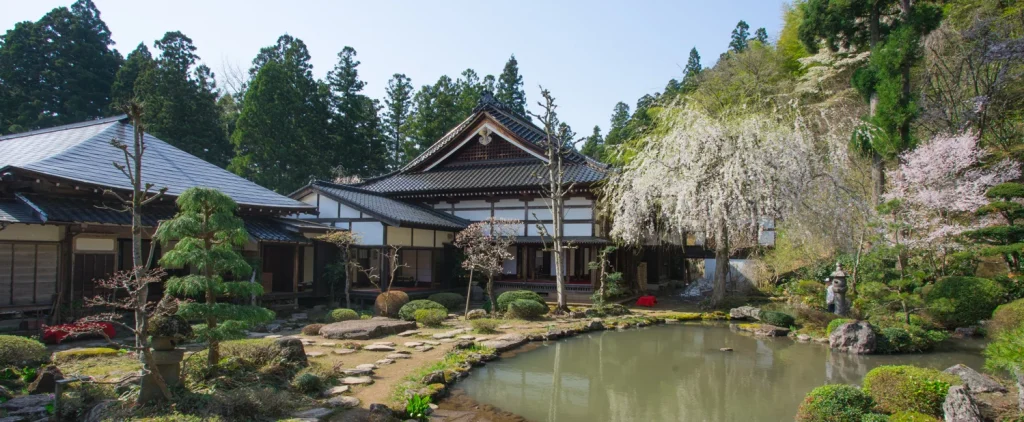
The biggest drawcard to Gyokusenji Temple has to be its extensive traditional Japanese garden. The intricately placed rocks in the pond complete with Koi carp, well-crafted ornaments, and masterfully managed trees and shrubs are a relaxing and awe-inspiring sight to behold. First built in the Muromachi period (1450s), the garden was redesigned in 1640 in the style of Chisen Kaiyu Horai by Tenyu, the same priest who built the 2,446 steps up Mt. Haguro. The garden was even designated as a national cultural heritage site of scenic beauty in 1987.
This garden is often frequented by locals of the Shonai region, animal or otherwise. Looking out at the garden, you may sometimes see raccoons, various species of large birds, butterflies, or snakes, but the marvelous display of fireflies during the warm summer nights is probably the most memorable.
If you’re feeling adventurous, grab some of the outdoor slippers and take the time to walk through the garden itself.
There are a few stone paths to take and if you climb the hill at the back of the garden, you will see a shrine dedicated to the founders and forefathers of the temple, or a hall for Jizo-sama, the protectors of travelers.
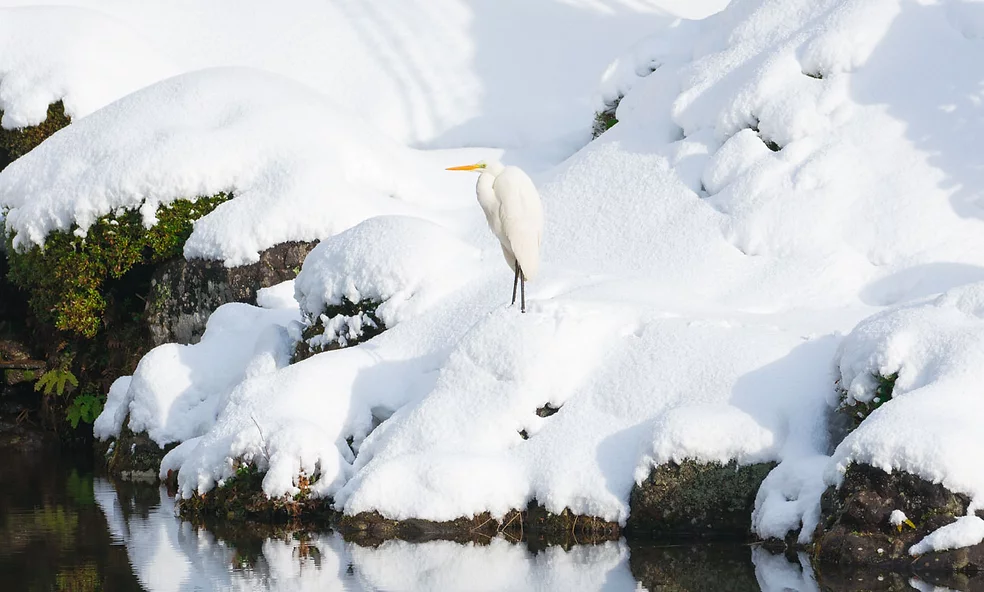
The History of Gyokusenji Temple
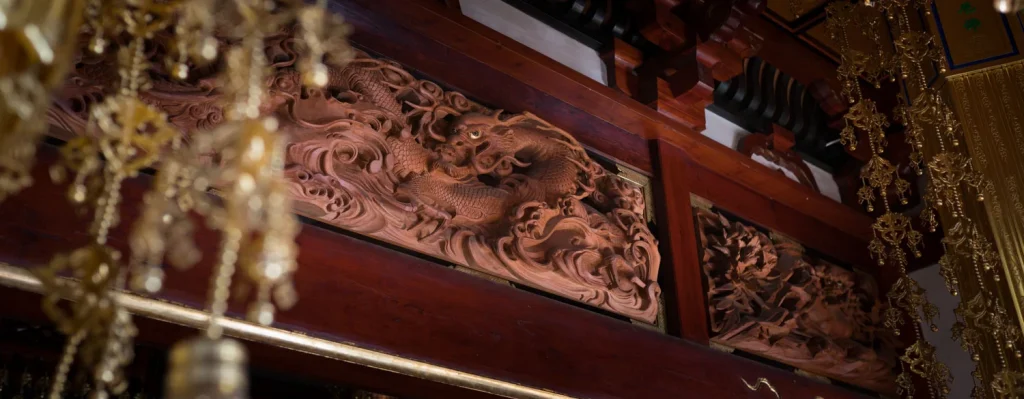
Gyokusenji Temple was originally built in 1251 by Ryonenhomyo, a buddhist priest born in Korea who trained in ascetic practices at the Kinzan Temple in China. Also the best disciple of Dogen, himself a prominent figure in the history of Buddhism in Japan as the founder of the Soto Sect, Ryonenhomyo is said to have visited Mt. Haguro on a pilgrimage to Japan when he established the temple in its current location. On his way back to China he travelled through Japan and built many Kan’on Do, halls that enshrine Buddhist statues, establishing the basis for Zen Buddhism in the process.
Like in many parts of Japan during the Sengoku (warring states) period, the history gets a bit fuzzy until the Muromachi period (1333 to 1568), when it is known that the Lord of Shonai, Fujiwara, requested Nanei Kenshu of Ko’unji in Murakami, Niigata become head priest in 1453 (the second year of the Kyotoku period). Unfortunately, the current buildings are not original. They were moved there from the nearby Toge township after a fire destroyed the original buildings, but not before Emperor Meiji stayed in the main room with big doors that looks out over the garden.
It goes without saying that Gyokusenji Temple is the perfect spot for some Zen meditation. Find a place you particularly enjoy and sit down to relax your mind from trouble. If the master is home, he may also be able to lead you through a session too. Contact us for pricing and bookings.
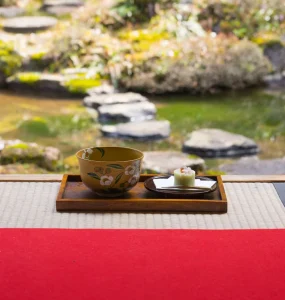
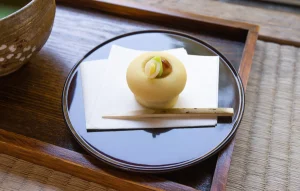
Best time to visit
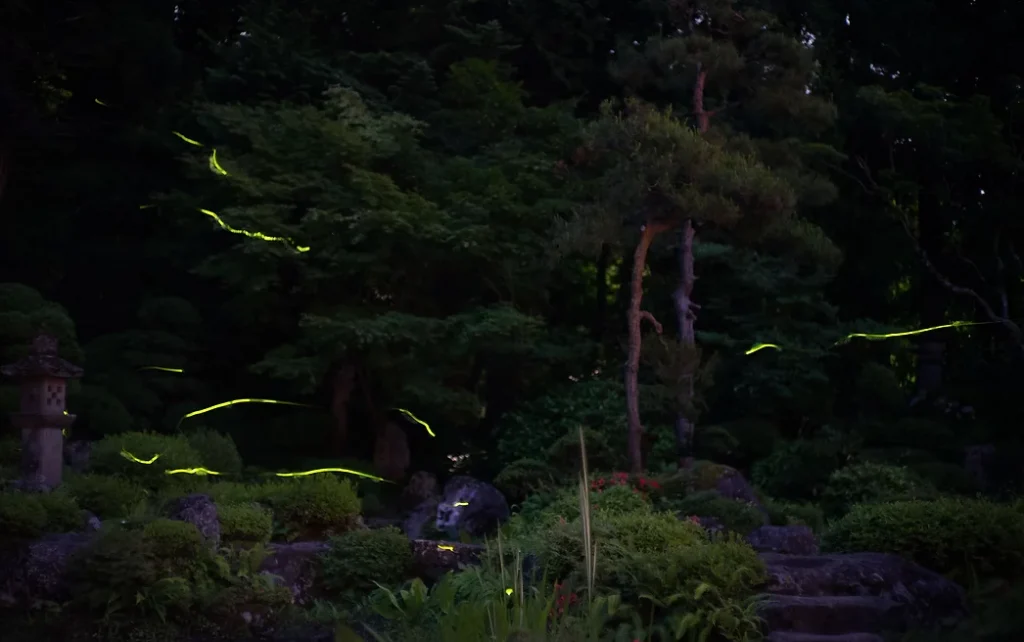
As Gyokusenji Temple is so intricately intertwined with its traditional garden, the place is excellent for a visit year-round. However, the garden is especially nice during the cherry blossom season from mid-April, in early summer with the hydrangeas, or amongst the autumn foliage from late September to November. Note that the sweet accompanying the green tea also changes according to the season, another reason to check Gyokusenji Temple out at different times during the year.
For information and reservations for Gyokusenji Temple’s Zen Mediation Experience or their Firefly Tea Ceremony please contact us.
Getting There
Due to its secluded location, Gyokusenji Temple is best accessed by car. Head south-west out of Tsuruoka along the Haguro Kaido until you get to the traffic lights by the giant persimmon.
Take a right here, and follow the road up the hill past the quarry. Take the first left as you enter a little hamlet. Gyokusenji Temple is about a kilometer up this road and to the left, but can be hard to spot.
Be sure to leave enough time (at least one hour) to sit down and enjoy the tranquil garden without having to worry about any time restrictions!
Gyokusenji Temple’s address:
Tamagawa-35 Haguromachi Tamagawa, Tsuruoka, Yamagata Prefecture 997-0121

